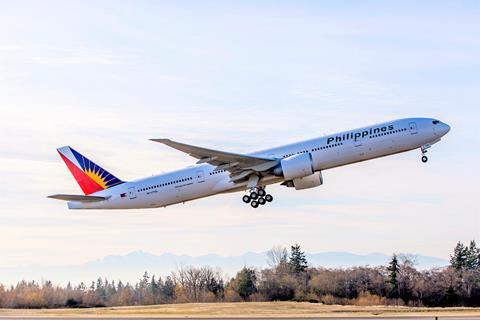Philippine Airlines swung to an operating loss of Ps4.7 billion ($93.7 million) for the first six months of 2021, under the severe impact of the coronavirus pandemic.
Total revenue for the six months ended 30 June halved to Ps18 billion, with passenger revenue falling 60.4% Ps 11.6 billion, according to the airline’s interim results release.

One area of improvement was cargo, with revenue rising 31% to Ps5.5 billion.
Net losses for the first six months of 2021 came to Ps16.6 billion, compared with Ps20.7 billion a year earlier, as the PAL halved expenses to Ps13.8 billion.
“The Group’s liquidity situation became more critical in 2020 and 2021 due to severely weak passenger sales and revenue as an adverse effect of the Covid-19 pandemic,” says PAL.
“The Covid-19 outbreak and the measures taken by the Philippine and foreign governments have caused disruptions to PAL’s passenger operations, resulting to temporary suspension and limited operations of its flights both for domestic and international routes. Consequently, the decline in revenue and cash inflows has put significant strain on the Group’s liquidity position and on its compliance with certain loan covenants.”
On a quarterly basis, revenue tripled year on year to Ps6.3 billion, with both passenger and cargo revenue showing improvements. This, combined with lower quarterly expenses, allowed PAL to narrow net losses to Ps8 billion, compared with a net loss of Ps11.4 billion a year earlier.
The second quarter results were also helped by less restrictions around air travel as compared with the same period in 2020.
As of 30 June 2021, cash and cash equivalents stood at Ps2.1 billion, down from Ps2.4 billion on 31 December 2020.
PAL adds that is in the process of a restructuring owing to the “difficulty of sourcing additional financing.”
The has revised its delivery schedule, postponing deliveries due in 2020-21 to 2026, 2030.
As of 30 June, PAL’s fleet comprised 95 aircraft, down from 97 at the end of 2020. Of these, 80 aircraft are leased.


























